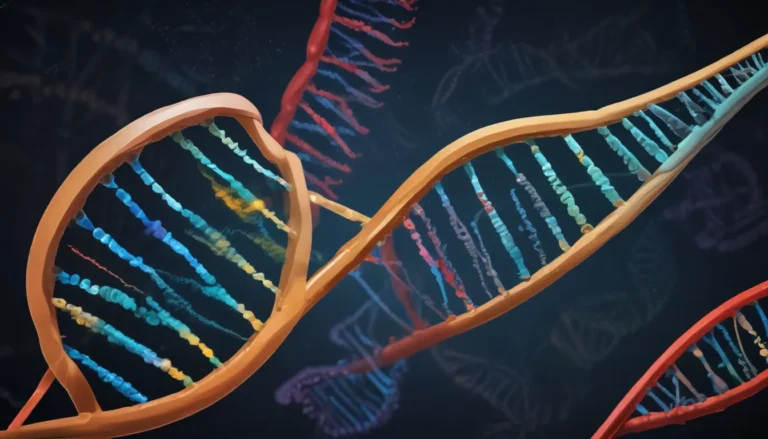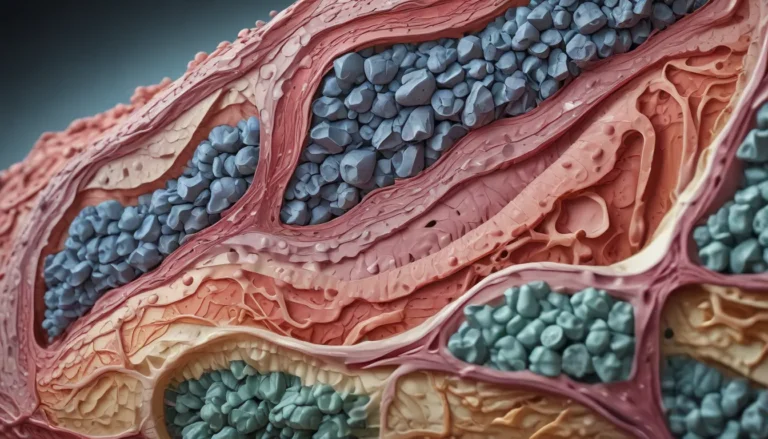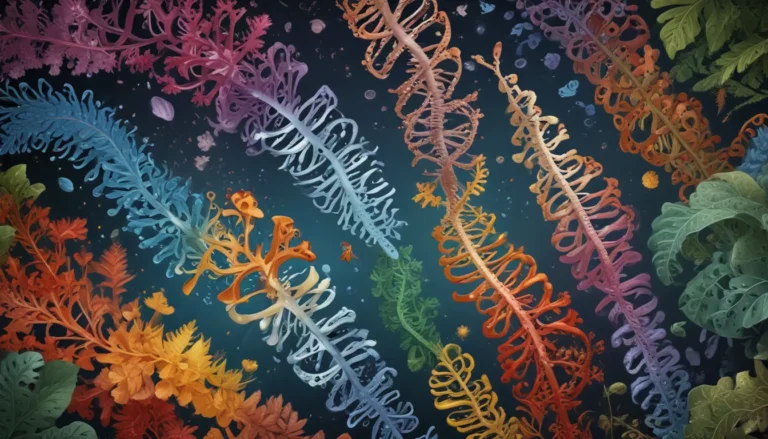A Note About Images: The images used in our articles are for illustration purposes only and may not exactly match the content. They are meant to engage readers, but the text should be relied upon for accurate information.
Welcome to the awe-inspiring world of tissue engineering, where the boundaries between biology, engineering, and medicine blur to create remarkable advancements with the potential to revolutionize healthcare. In this article, we will take you on a journey through 17 mind-boggling facts about tissue engineering that showcase the incredible possibilities in this dynamic field. From growing artificial organs to personalized cancer therapies, tissue engineering is paving the way for a brighter future in healthcare.
Delving into Tissue Engineering
Tissue engineering is a groundbreaking field that merges biology, engineering, and materials science to develop functional living tissues capable of repairing or replacing damaged organs in the human body. Stem cells, renowned for their unique ability to differentiate into various cell types, play a pivotal role in tissue engineering processes. They facilitate the regeneration and repair of damaged tissues by promoting cell growth and regeneration, leading to personalized cancer therapies and innovative medical interventions.
The Evolution of Tissue Engineering
The roots of tissue engineering can be traced back to the late 19th century when German physician Julius Wolff introduced the concept. Since then, advancements in technology have propelled the exponential growth of tissue engineering, transforming it into a cutting-edge discipline with far-reaching implications for healthcare.
Transforming Healthcare with Tissue Engineering
One of the most remarkable applications of tissue engineering is the creation of artificial organs such as hearts, kidneys, and livers. These bioengineered organs hold the promise of addressing organ shortages and saving countless lives. Additionally, tissue engineering techniques have been successfully applied in veterinary medicine to treat animals suffering from various conditions, demonstrating the versatility and impact of this field beyond human applications.
Innovations in Tissue Engineering
Bioprinting, a cutting-edge technique in tissue engineering, leverages specialized 3D printers to create complex structures using living cells. This precision allows for the creation of intricate tissue structures with unprecedented accuracy and scalability. Furthermore, tissue-engineered skin models have revolutionized cosmetic testing by offering a more ethical and accurate alternative to traditional animal testing methods.
Promising Applications of Tissue Engineering
Tissue engineering holds immense potential in regenerative medicine by supporting the body’s natural healing processes and creating functional tissues that aid in repairing damaged nerves, bone grafts, and heart tissue. Scientists are also exploring the development of bioartificial kidneys to mimic the function of natural kidneys, offering hope to patients with end-stage renal disease. These innovative applications underscore the transformative impact of tissue engineering on healthcare.
Unveiling the Future of Tissue Engineering
As the field of tissue engineering continues to evolve, driven by advancements in materials science, nanotechnology, and cell biology, new discoveries and innovations are on the horizon. Researchers are working towards creating artificial blood vessels for treating cardiovascular diseases and exploring ways to eliminate organ shortages through the development of functional organs in the laboratory.
Unlocking the Potential of Tissue Engineering
The future of tissue engineering holds endless possibilities for improving and transforming healthcare as we know it. By creating customized implants, reducing organ transplant waiting lists, and enhancing patient recovery, tissue engineering is poised to revolutionize the medical landscape. Researchers and scientists are tirelessly exploring new techniques and materials to unlock the full potential of tissue engineering and shape a brighter future for healthcare.
Frequently Asked Questions
-
What is tissue engineering?
Tissue engineering is a multidisciplinary field that combines biology, engineering, and medicine to create functional artificial tissues and organs in the laboratory. -
How does tissue engineering work?
Tissue engineering involves combining cells, scaffolds, and growth factors to create a three-dimensional structure that mimics the natural environment of living tissues. These structures develop into functional tissue when transplanted into the body. -
What are the applications of tissue engineering?
Tissue engineering has a wide range of applications, including regenerative medicine, organ transplantation, drug testing, and disease modeling. It offers potential treatments for conditions like heart disease, diabetes, and spinal cord injuries. -
Can tissue engineering replace organ transplantation?
While tissue engineering has made significant progress in producing functional tissues and organs, it has not yet completely replaced organ transplantation. However, it has the potential to reduce organ transplant waiting lists and provide customized implant options. -
Are there any ethical concerns with tissue engineering?
Ethical concerns exist in tissue engineering, particularly regarding the use of stem cells and the creation of artificial life. The field continues to develop guidelines and regulations to ensure responsible and ethical practices. -
Is tissue engineering available for clinical use?
Some tissue engineering techniques and products are currently in clinical use, particularly in the field of skin and cartilage repair. However, many other applications are still in the research and development stage. -
What are the challenges in tissue engineering?
One of the major challenges in tissue engineering is achieving vascularization, or creating a network of blood vessels within the engineered tissue. This is essential for supplying nutrients and oxygen to sustain the cells. -
Will tissue engineering have a significant impact on healthcare in the future?
Yes, tissue engineering holds great potential to transform healthcare in the future by providing new treatment options, reducing reliance on organ transplantation, and improving patient outcomes for a wide range of medical conditions.
Conclusion
The remarkable advances in tissue engineering have reshaped the landscape of medicine, offering innovative solutions to complex healthcare challenges. From artificial organs to personalized cancer therapies, tissue engineering holds the key to a brighter future for healthcare. As researchers and scientists continue to push the boundaries of this field, the endless possibilities of tissue engineering promise to revolutionize healthcare and transform the lives of millions worldwide.
Embrace the incredible world of tissue engineering, where science meets compassion to drive remarkable breakthroughs in healthcare. Explore the limitless potential of tissue engineering and witness the profound impact it holds for the future of medicine. Join us on this transformative journey as we unlock the secrets of tissue engineering and pave the way for a healthier, brighter tomorrow.






